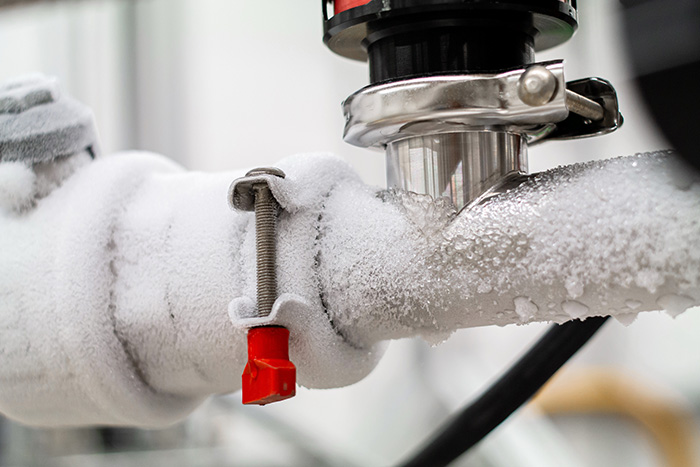Just about everyone has got their own rationale with regards to 6 Ways to Prevent Frozen Pipes.

Winter can ruin your pipes, especially by freezing pipelines. Below's exactly how to prevent it from taking place and what to do if it does.
Intro
As temperatures drop, the threat of icy pipelines rises, possibly resulting in costly repair services and water damages. Understanding how to avoid frozen pipes is essential for homeowners in cool environments.
Recognizing Frozen Pipelines
What causes pipelines to ice up?
Pipes freeze when subjected to temperatures listed below 32 ° F (0 ° C) for prolonged periods. As water inside the pipes freezes, it expands, putting pressure on the pipeline wall surfaces and possibly causing them to break.
Dangers and problems
Frozen pipelines can result in water supply disruptions, residential or commercial property damages, and costly repair work. Ruptured pipes can flooding homes and cause considerable structural damage.
Signs of Frozen Water Lines
Determining frozen pipelines early can prevent them from rupturing.
Exactly how to recognize frozen pipelines
Try to find reduced water flow from taps, unusual smells or noises from pipes, and noticeable frost on subjected pipes.
Prevention Tips
Shielding prone pipes
Wrap pipelines in insulation sleeves or make use of warmth tape to shield them from freezing temperatures. Focus on pipelines in unheated or external areas of the home.
Home heating strategies
Maintain interior spaces appropriately warmed, specifically locations with pipes. Open up closet doors to allow cozy air to circulate around pipelines under sinks.
Shielding Exterior Plumbing
Yard pipes and outside taps
Separate and drain yard hoses prior to winter months. Mount frost-proof spigots or cover outside taps with insulated caps.
What to Do If Your Pipelines Freeze
Immediate actions to take
If you suspect icy pipelines, keep taps open up to eliminate pressure as the ice thaws. Use a hairdryer or towels taken in hot water to thaw pipes gradually.
Long-Term Solutions
Architectural modifications
Take into consideration rerouting pipes away from outside wall surfaces or unheated areas. Add additional insulation to attic rooms, cellars, and crawl spaces.
Updating insulation
Buy high-grade insulation for pipes, attics, and wall surfaces. Proper insulation aids keep consistent temperatures and minimizes the threat of frozen pipelines.
Verdict
Preventing icy pipelines calls for aggressive measures and quick actions. By understanding the causes, signs, and preventive measures, property owners can shield their plumbing during winter.
5 Ways to Prevent Frozen Pipes
Drain Outdoor Faucets and Disconnect Hoses
First, close the shut-off valve that controls the flow of water in the pipe to your outdoor faucet. Then, head outside to disconnect and drain your hose and open the outdoor faucet to allow the water to completely drain out of the line. Turn off the faucet when done. Finally, head back to the shut-off valve and drain the remaining water inside the pipe into a bucket or container. Additionally, if you have a home irrigation system, you should consider hiring an expert to clear the system of water each year.
Insulate Pipes
One of the best and most cost-effective methods for preventing frozen water pipes is to wrap your pipes with insulation. This is especially important for areas in your home that aren’t exposed to heat, such as an attic. We suggest using foam sleeves, which can typically be found at your local hardware store.
Keep Heat Running at 65
Your pipes are located inside your walls, and the temperature there is much colder than the rest of the house. To prevent your pipes from freezing, The Insurance Information Institute suggests that you keep your home heated to at least 65 degrees, even when traveling. You may want to invest in smart devices that can keep an eye on the temperature in your home while you’re away.
Leave Water Dripping
Moving water — even a small trickle — can prevent ice from forming inside your pipes. When freezing temps are imminent, start a drip of water from all faucets that serve exposed pipes. Leaving a few faucets running will also help relieve pressure inside the pipes and help prevent a rupture if the water inside freezes.
Open Cupboard Doors
Warm your kitchen and bathroom pipes by opening cupboards and vanities. You should also leave your interior doors ajar to help warm air circulate evenly throughout your home.

I stumbled upon that page about 6 Ways to Prevent Frozen Pipes while doing a lookup on the search engines. Sharing is nice. Helping people is fun. I cherish reading our article about 6 Ways to Prevent Frozen Pipes.
Visit Our Website